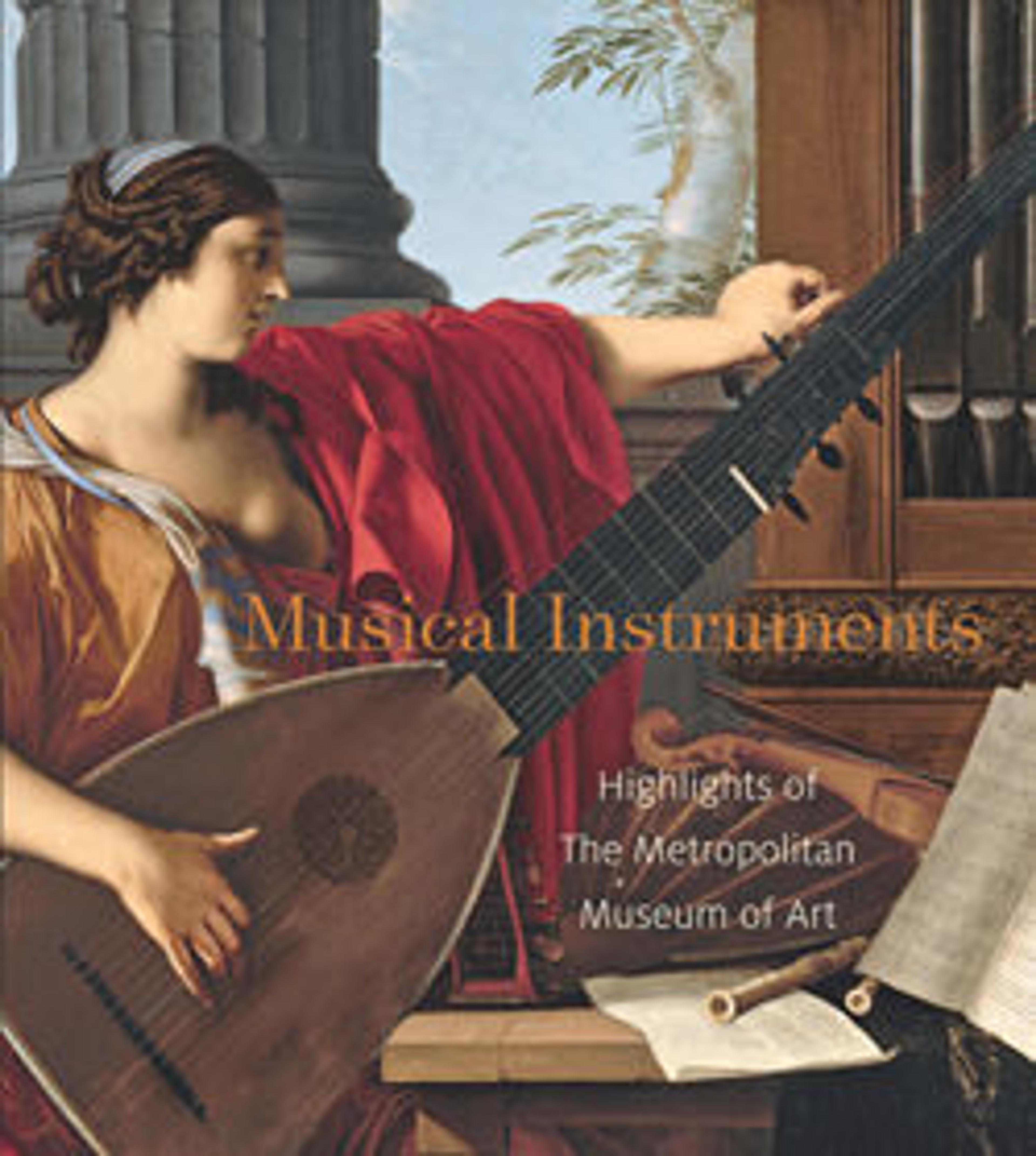Bird-Headed Figure Whistle
This freestanding ceramic figure represents a mastery of Veracruz decorative style and a spirited, improvisational use of form. An attitude of power is conveyed by a wide stance, outward extended elbows, and hands placed upon hips. Opposing the solidity of this posture is the floating, asymmetrical form of a fantastic horned and feathered serpent projecting from the head of the masked human figure or bird-headed anthropomorph. This figure wears an elaborate collar and a loincloth with a panel decorated with an abstract design that can be read as a splayed anthropomorphic figure. The broad collar that caps the figure's shoulders possesses a central element and is incised along its edge to depict a fringed border. Panels of scrollwork and interlaces and bands of repeated motifs characteristic of the art of Veracruz appear in relief on surfaces throughout the composition. The figure is actually a whistle and its musical function and the creative, whimsical compositions that inform the object give it an air of ceremony and celebration.
Artwork Details
- Title: Bird-Headed Figure Whistle
- Date: 8th–9th century
- Geography: Mexico, Mesoamerica, Veracruz
- Culture: Veracruz
- Medium: Ceramic, pigment
- Dimensions: H. 20 1/4 x W. 9 1/2 x D. 5 3/4 in. (51.4 x 24.1 x 14.6 cm)
- Classification: Ceramics-Musical Instruments
- Credit Line: The Michael C. Rockefeller Memorial Collection, Gift of Nelson A. Rockefeller, 1963
- Object Number: 1978.412.80
- Curatorial Department: The Michael C. Rockefeller Wing
More Artwork
Research Resources
The Met provides unparalleled resources for research and welcomes an international community of students and scholars. The Met's Open Access API is where creators and researchers can connect to the The Met collection. Open Access data and public domain images are available for unrestricted commercial and noncommercial use without permission or fee.
To request images under copyright and other restrictions, please use this Image Request form.
Feedback
We continue to research and examine historical and cultural context for objects in The Met collection. If you have comments or questions about this object record, please contact us using the form below. The Museum looks forward to receiving your comments.
